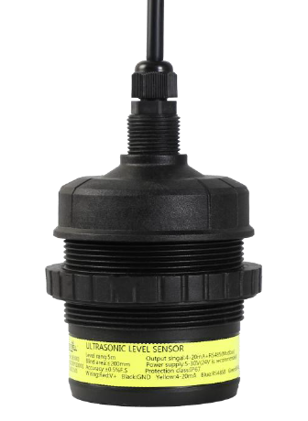Level Sensors
Water Level Cable Float Switch
- Simple and reliable: Best for basic on/off control, like turning pumps on or off.
- Works in turbulent or dirty liquids: Handles harsh conditions where other sensors might struggle.
- Easy to install and maintain: Less complex setup compared to other options.
Water Level Submersible Transmitter
- Accurate and continuous monitoring: Provides precise real-time data on water levels.
- Flexible output options: Integrates with various monitoring systems for remote alerts or control.
- Suitable for clean or slightly contaminated liquids: Works well in most water applications.
- Usable in deep tanks or wells: Can be submerged for deeper level measurement.
Liquid Ultrasonic Level Transmitter
- Non-contact measurement: Ideal for corrosive, sticky, or foaming liquids that can damage other sensors.
- High accuracy and wide range: Measures precisely across various distances.
- Less susceptible to buildup: Readings aren’t affected by residue on the sensor surface.
- Adaptable to various tank shapes and sizes: Works in different tank configurations.

From homes to factories, water level control is key. Here’s a breakdown of 3 popular sensors to help you choose the right one
Cable Float Switch: Simple On/Off
- Strengths: Reliable, easy to install, works in dirty liquids.
- Ideal for: Basic on/off control (pumps) in dirty water (wastewater).
- Limitations: Binary (on/off) output, not for continuous monitoring.
Submersible Transmitter: Precise Monitoring
- Strengths: Continuous, accurate readings, various outputs for remote control.
- Ideal for: Clean or slightly dirty water (rain tanks) needing remote monitoring in deep tanks.
- Limitations: Not ideal for very dirty or corrosive liquids.
Ultrasonic Level Transmitter: Touchless Tech
- Strengths: Perfect for corrosive/sticky liquids, high accuracy over wide range, adaptable tanks.
- Ideal for: Avoiding sensor damage from harsh liquids (foaming, corrosive) in various tank shapes/sizes.
- Limitations: Generally more expensive.


